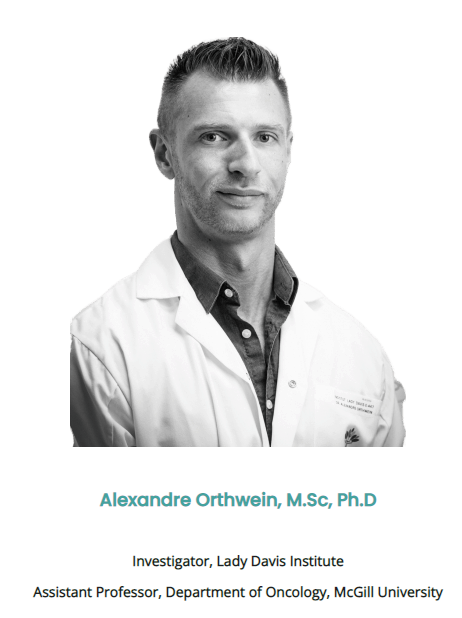
Beyond BRCA1: identification of novel DNA repair factors
Dr. Alexandre Orthwein
Segal Cancer Centre, Lady Davis Institute
Gerald Bronfman Department of Oncology, McGill University
Department of Radiation Oncology, Emory University
23/09/2022
13:00-14:00
Aula Pau Viladiu
Resum
Abstract
DNA double-strand break (DSBs) are highly cytotoxic DNA lesions which can be repaired by two major pathways: non-homologous end-joining (NHEJ) and homologous recombination (HR). Proper DNA repair pathway choice is governed by the opposing activities of 53BP1 and BRCA1 along side their respective effectors, in a cell cycle-dependent manner. Using both systematic proteomics and genome-wide CRISPR-based screens, we mapped novel DNA repair factors critical for the regulation of NHEJ and HR, including the Shieldin complex, POGZ and C1orf112. These factors are of particular relevance for different human genetic syndromes, such as the White-Sutton syndrome, and the development of breast and ovarian cancers.
Biografia
Dr. Alexandre Orthwein recently joined the Department of Radiation Oncology at Emory University. Prior to that, Dr. Orthwein was an Assistant Professor in the Gerald Bronfman Department of Oncology at McGill University and a Principal Investigator at the Segal Cancer Centre within the Lady Davis Institute, where he held the Canada Research Chair in genome stability and hematological malignancies. He completed his graduate studies at the University of Montreal where he developed a strong interest in B-cell biology and hematological malignancies. He subsequently joined the laboratory of Dr. Daniel Durocher at the Lunenfeld-Tanenbaum Research Institute, where he investigated the interplay between the cell cycle and the repair of DNA double-strand breaks.
